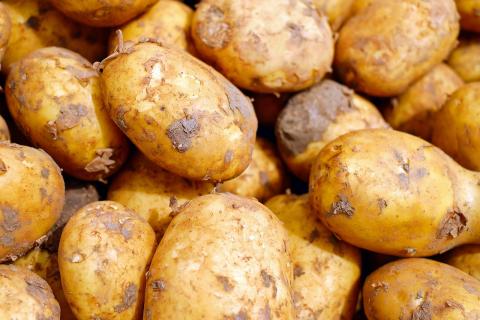For episode five of the RASE Farm of the Future podcast, we were joined by Dr Alastair Leake from The Allerton Project, to discuss the opportunities for growing root crops as part of a regenerative system.
Two of the principles of regenerative agriculture are to minimise disturbance to the soil and to protect the soil surface, which can be achieved by growing of cover crops or leaving residues rather than having bare land. Root crops are an important part of our diet, but unfortunately, they are traditionally grown from bare land with a great deal of soil disturbance.
Read on or listen to the episode to explore how root crops can be integrated within rotations, which can have an overall restorative impact over the course of the whole rotation.
Restorative and exploitative periods
In the podcast episode, Alastair highlighted that the solution for potatoes and other root crops is not new. “My principles go back to the middle ages and the Norfolk four course rotation …. In which you have a period where you restore the fertility to the soil, then you go through a period where you exploit that fertility and deplete it, before going back to a restorative phase,” he said.
Alastair explained that the goal of a regenerative agriculture systems growing root crops is to have a phase ahead of the root crop to restore soil structure and fertility, then go through the exploitative period and then back to the restorative period. “The objective for any rotation should be that at the end of the rotation the soil is in better condition than it was at the start of the rotation,” he added.
In rotations which include root crops, there are things that can be done to mitigate the severity of damage being done during the exploitative phase. For example, potatoes are planted in spring, so there is the opportunity to have a cover crop in over the winter which will build soil organic matter ahead of the potato crop. Alternatively, if potatoes are following a ley period in the rotation, the ley might be kept over the winter and only destroyed in the spring, to minimise the time the soil is left bare.
Importing in organic matter
Some soils restore themselves more quickly than others. Lighter soils tend to mineralise carbon very easily, so the restorative period can take a lot longer.
Growing legumes and cover crops can help restore organic matter to soils, but in sandy soils Alastair suggests farmers might choose to bring in compost or manure to increase the amount of carbon in that soil.
“At The Allerton Project we’ve also experimented with biochar, which is a very stable form of carbon that can be applied to the soil and can help increase the amount of carbon that is stored in the soil,” Alastair added.
Using ley periods
The availability of field scale pollen and nectar mixes in Countryside Stewardship and SFI, such as AB15, enables farmers to be paid to put in legume rich leys. These are grown for two years, building the fertility of the soil, before exploiting again in the next phase of the rotation.
Alastair highlighted that for a lot of farmers there is an assumption that if a ley period is included in a rotation, then livestock are also required. “Before I came to Allerton, I ran an exciting experiment looking at stockless organic farming,” he said. “This involved growing the fertility building leys and cutting and mulching them, so microbes can break it down and build the fertility of the soil up.”
For arable farmers, mowing and mulching can provide a way of building soil fertility without needing to bring in livestock.
Earthworm immigration
Healthier soils are more resilient to wet and dry conditions. Alastair shared that one of the fields at The Allerton Project, which has not been cultivated for 14 years, has seen earthworm numbers increase from 200 per m2 to 700 per m2. The earthworms create a porous soil structure, as their burrows effectively construct a honeycomb structure in the soil.
“When it rains hard, the soil has a lot more airspace in it, which then becomes water space and takes up that water, rather than it running off and creating erosion,” Alastair said. “That then acts as a reservoir, and the field is more resilient to deal with periods without rainfall, which was noticeable in the dry summer of 2018, when the crop of wheat in that field was the one that stayed the greenest the longest.”
The ploughing and destoning operations associated with growing root crops are destructive to earthworms. But if the root crop is following a ley period, then leaving the headland unploughed can be helpful to earthworms, as it acts as a refuge from which they can move out from and recolonise quicker than if the whole field were to be ploughed.
A rotational approach to root crops
Although there is opportunity to build soil fertility in advance of a root crop, the reality of growing root crops in the UK is that because they require grade 1 or 2 land , the specialist growers of root crops tend to rely heavily on rented land. This does present a challenge, as it’s what happens either side of the root crop in the rotation that ultimately determines whether the soil fertility is improved over the entire rotation. However, it is possible to take a different approach, and Alastair highlights that he knows of one example where the grower of the root crops works with farmers to agree the rotation before and after the root crop, meaning restorative practices can be put in place.
To hear more from Alastair, listen to the podcast here, or search ‘RASE Farm of the Future’ wherever you get your podcasts.


